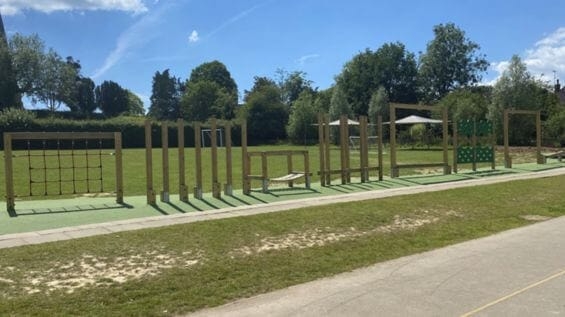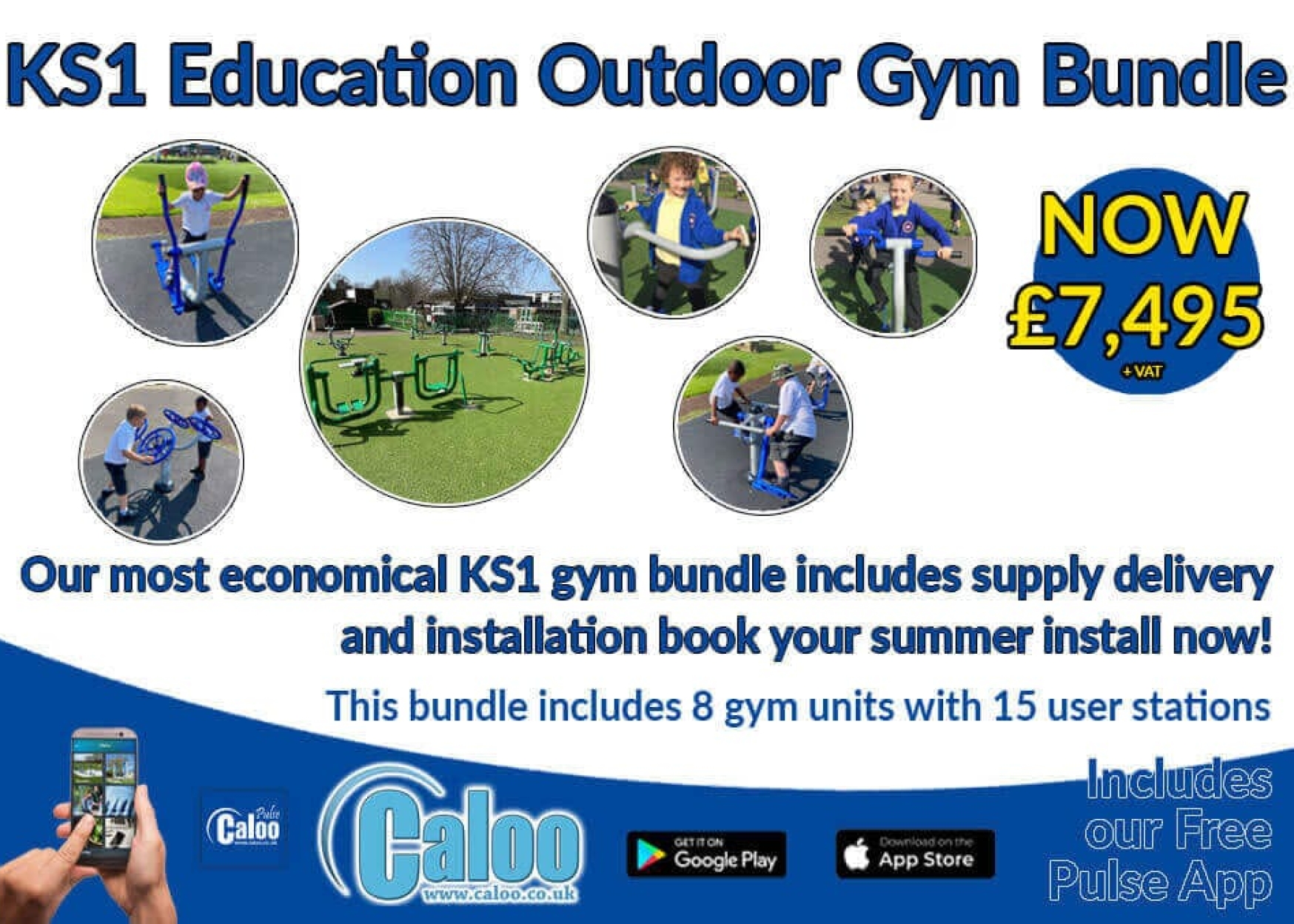
Apr

Trim Trail Equipment Ideas for Active Outdoor Learning
Outdoor learning continues to grow in popularity, and with good reason. Not only does it provide children with vital time in nature, but it also offers them opportunities to engage in physical activities that support health, wellbeing, and academic performance. At the heart of active outdoor learning lies thoughtfully designed trim trail equipment – a valuable resource for schools, local authorities, and public play areas.
Some trim trail equipment ideas for active outdoor learning include balance beams, stepping logs, climbing ropes, monkey bars, and net bridges. These elements help improve coordination, strength, and teamwork while supporting curriculum-based physical activity in schools and community play areas.
In this blog, we explore some of the best trim trail equipment ideas to enhance active learning outdoors, as well as their educational benefits and how they can be used across a range of abilities and ages.
What Is Trim Trail Equipment?
Trim trail equipment refers to a series of linked physical activity stations, often installed in school playgrounds, parks, or recreational areas. Each station typically targets a specific movement or muscle group – such as balancing, climbing, jumping, or crawling – and encourages children to navigate the course in sequence, either individually or in groups.
Originally developed for military training and fitness circuits, trim trails have evolved to become a staple of modern school grounds, combining educational play equipment with fun, inclusive movement.
Depending on the environment, trim trails may be constructed using:
• Timber, ideal for natural surroundings
• Steel, durable and long-lasting for high-traffic spaces
• Recycled plastic, an eco-conscious choice for sustainable playgrounds
Best Trim Trail Equipment Ideas for Schools
Here are some tried-and-tested trail components that promote both physical development in children and active engagement.
1. Balance Beams and Wobble Walks
Balance-focused equipment encourages children to fine-tune coordination and core stability. These activities challenge spatial awareness and help improve posture and motor skills.
Helpful Link: Incorporate counting or phonics activities as children cross each beam.
2. Stepping Logs and Jumping Discs
These simple, space-efficient elements develop leg strength, rhythm, and sequencing. They can be spaced to suit different age groups and abilities, making them a favourite in school outdoor activities.
Helpful Link: Use coloured stepping logs for pattern recognition or memory-based games.
3. Climbing Ropes and Traverse Walls
Upper body strength, grip, and lateral thinking are all tested through rope-based challenges and climbing walls. These offer a more vigorous level of activity while still being safe and engaging.
Helpful Link: Encourage teamwork by having pupils help each other across sections.
4. Monkey Bars and Overhead Ladders
These pieces build physical endurance, resilience, and perseverance. Navigating monkey bars promotes shoulder, arm and hand strength – essential for handwriting development in younger pupils.
Helpful Link: Time-based challenges can add an element of friendly competition.
5. Zig-Zag Paths and Net Bridges
These stimulate inclusive play and problem-solving. Children must work out how best to traverse the equipment without touching the ground – developing imaginative thinking and risk assessment skills.
Helpful Link: Use storytelling to turn these features into jungle bridges or castle crossings.
Inclusive Trim Trail Options for All Abilities
It’s essential that outdoor play environments cater to a diverse range of needs. Inclusive play equipment ensures every child can benefit from active play and outdoor learning, regardless of their physical or cognitive abilities.
Accessible Trim Trail Elements
Ground-level equipment such as low beams and crawl tunnels are suitable for wheelchair users or those with limited mobility.
Sensory stations like textured panels, musical elements, or mirror features can stimulate children with sensory processing needs.
Wider platforms and supportive handrails enable safer participation and independence.
Inclusivity is not just about physical access – it’s about creating a space where every child feels confident and valued.
How Trim Trails Support Outdoor Learning Objectives
Thebenefits oftrim trail equipment extend far beyond physical fitness. When thoughtfully integrated, these pieces can play a vital role in delivering cross-curricular outcomes and supporting holistic child development.
Links to the National Curriculum
PE & Physical Development– Improve gross motor skills, balance, coordination, and overall fitness.
Science & Nature Studies– Use outdoor movement to explore body mechanics, forces, and health.
PSHE (Personal, Social, Health and Economic Education)– Trim trails naturally encourage social interaction, problem-solving, and resilience – all vital soft skills.
Cross-Curricular Learning Ideas
• Use climbing nets to introduce concepts of force and tension in science.
• Add number markers to beams or discs for maths-based activities.
• Encourage creative writing by turning each station into part of an imaginative adventure story.
This turns a trim trail into far more than just playground equipment – it becomes a flexible, creative, and collaborative learning tool.
Planning a Trim Trail for Your School or Community Space
When planning a trim trail, several factors should be taken into account to ensure the space is safe, engaging, and suitable for long-term use.
1. Assessing Space and Budget
Smaller playgrounds can benefit from modular or linear trim trail designs.
Consider combining static fitness pieces with dynamic elements to create a flowing course.
2. Tailoring for Age Groups
Younger children (KS1) benefit from lower, simplified structures with bright visuals.
Older pupils (KS2+) can manage more complex elements like rope climbers or monkey bars.
3. Surface Safety
Proper safety surfacing is crucial. Options include:
• Wet pour rubber
• Grass mats
• Bark mulch
• Artificial grass
Each option has pros and cons depending on footfall, weather exposure, and aesthetic goals.
4. Work with a Trusted Supplier
Choosing an experienced outdoor play provider like Caloo ensures:
• Expert design guidance
• High-quality, durable materials
• Installation that meets safety standards
• Ongoing maintenance and support
Explore Different Types of Trim Trails Offered by Caloo
Caloo offers a versatile range of pre-designed trim trail packages tailored for schools, parks, and community spaces. Each trail is thoughtfully constructed to provide a balance of fun, challenge, and educational value. Whether you’re working with limited space or seeking a full outdoor fitness experience, there’s a solution to suit every setting.
Olympic Trail
Designed for older children or more physically able users, the Olympic Trail offers a high-energy experience featuring overhead ladders, stepping posts, and climbing elements. It’s ideal for developing upper-body strength, coordination, and endurance.
National Trail
This well-rounded trail combines balance, agility, and climbing with features like wobble boards, traverse walls, and parallel bars. Suitable for a wide range of age groups, the National Trail encourages full-body movement and interactive play.
Regional Trail
Perfect for medium-sized spaces, the Regional Trail incorporates activities like leapfrog posts and balance beams. This layout is ideal for promoting coordination, rhythm, and group engagement during break times or structured outdoor learning sessions.
County Trail
Designed with younger children or smaller spaces in mind, the County Trail focuses on essential skills like balance, stepping, and climbing at a gentler level. It’s a fantastic introduction to active play for early years or KS1 pupils.
Final Thoughts: Why Trim Trails Matter
Incorporating trim trail equipment into your outdoor learning strategy offers countless benefits. It builds physical strength, improves attention spans, enhances creativity, and supports inclusive education. Most importantly, it gets children moving – and learning – in a natural, enjoyable way.
If you’re looking to bring active learning outdoors to your school or public space, Caloo’s expert team is ready to help.
Get started today and contact Caloo to explore bespoke trim trail solutions tailored to your space, age group, and learning goals.

















